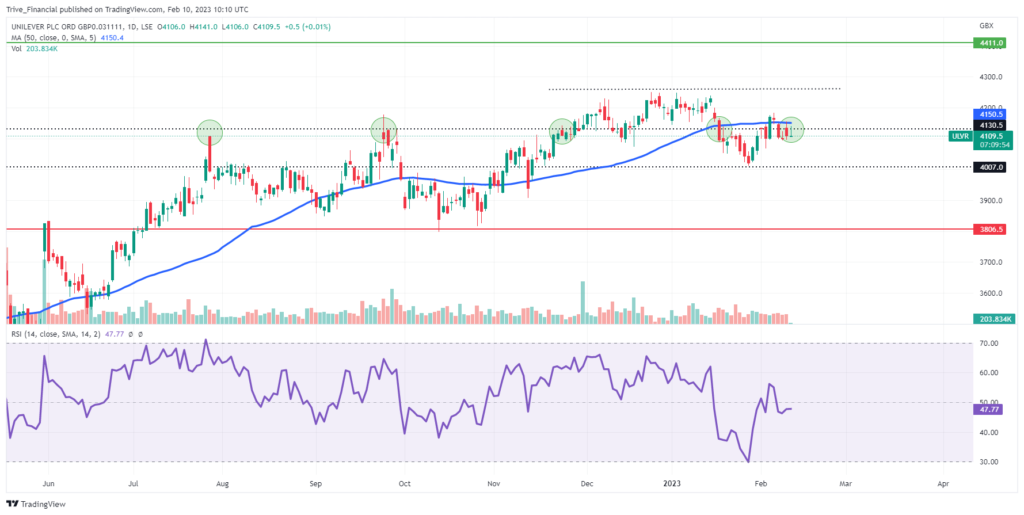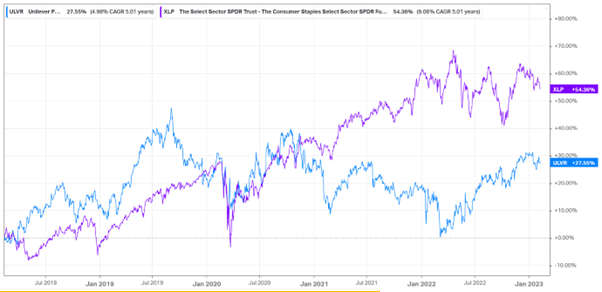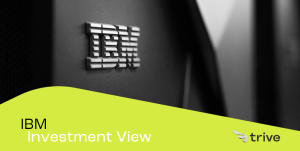Unilever PLC (LSE: ULVR) has always been a strong force in the market for consumer goods. Their FY2022 financial results reiterated their ability to remain resilient in even the toughest of conditions, as they boasted a 14,5% boost in turnover for the year. The market, however, should have rewarded them with meaningful gains, which has left investors wondering whether there is further upside in the stock price of the consumer staple giant.
Their revenue grew by 9% for the year, as they posted EPS of €2,99, which beat estimates in an earnings report that reflected solid performance. However, their share price dropped by 0,1% as investors failed to see any meaningful growth drivers to navigate a year that will continue to apply pressure in the form of rising cost inflation and tighter margins.
Technical
The market has shown a lot of resistance around the 4130,5 level as investors are still determining whether more value can be extracted from the company. This same trend repeated around the earnings release, as results were positive, but there was not enough bullish momentum to push through that resistance. If there is a breakthrough past that resistance, the December highs of around 4259 could get tested again. If the market continues to resist, it may look for support again at the 4130,5 level before making a push up to what is estimated to be the fair value at 4411,0. However, if no breakthrough above the 4130,5 resistance occurs, the price could continue to look for momentum, which it may find at the support of 4007,0. If the market fails to support at that lower support level, a further bearish push down to October lows of 3806,5 is possible.

Fundamental
Unilever demonstrated what makes the consumer staples industry more attractive during high inflationary periods as they benefited from passing higher cost inflation onto the consumer. A 9% revenue growth was highly attributed to the 11,3% price hike on their products to cancel out the effect of lower volumes and higher costs. Inflationary pressures triggered by the geopolitical tensions between Russia and Ukraine and the continuation of further supply chain difficulties strain Unilever’s margins. Their operating margin suffered a contraction of 230bps to 16,1% with no signs of slowing down in the upcoming year. Global conditions may continue to squeeze their margins as inflation remains high. However, all of their segments showed growth in the latest quarter and the financial year for 2022. Their home care segment realized 11,8% sales growth, followed by ice cream (9%), nutrition (8,6%) and personal care (7,9%). These sales growth numbers seem strong, but they have not been strong enough historically to convince the market of their ability to generate wealth for their shareholders. Unilever has seen stagnant returns to their share price in the last couple of years. The graph below shows that Unilever has been underperforming heavily in the broader sector compared to a general benchmark for the consumer staples industry. This has raised concerns among investors about whether this “safer” stock can generate meaningful returns over the longer term.

Summary
Unilever reported solid 2022 performance and reaffirmed its ability to navigate challenging economic conditions. There is a possible entry opportunity at 4130,5 if a breakout through resistance occurs. However, with a fair value estimated at 4411,0, there is limited upside potential in the stock price that has been underperforming compared to its sector in the last five years.
Sources: Koyfin, Tradingview, Unilever Plc

